Air of Authority - A History of RAF Organisation
No 201 - 205 Squadron Histories
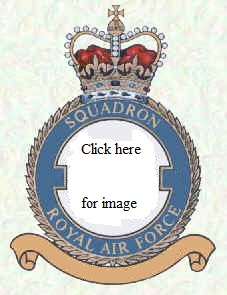 Formed
as an RNAS unit at Antwerp on 1 September 1914, it was disbanded during the British retreat from
Belgium on 14 October. Three days later it was reformed at Fort Grange,
Gosport on 17 October 1914 as No 1 Squadron RNAS and like most units at that time
it operated a variety of types. It was initially involved in coastal
patrols from Gosport, with various detachments but in January 1915, it
moved to Dover, still maintaining its detachments, until moving to St Pol in
February. On its move to Dover it had begun bombing raids against Ostend
and Zeebrugge and these continued following its move to St Pol. In June
1915, it was renamed No 1 (Naval) Wing and was now mainly carrying out defensive
operations against Zeppelins and on 6 June 1915, Flight Sub-Lieutenant R A J Warneford attacked the LZ37 with bombs, destroying it. This was the first
successful destruction of an airship by an aeroplane.
Formed
as an RNAS unit at Antwerp on 1 September 1914, it was disbanded during the British retreat from
Belgium on 14 October. Three days later it was reformed at Fort Grange,
Gosport on 17 October 1914 as No 1 Squadron RNAS and like most units at that time
it operated a variety of types. It was initially involved in coastal
patrols from Gosport, with various detachments but in January 1915, it
moved to Dover, still maintaining its detachments, until moving to St Pol in
February. On its move to Dover it had begun bombing raids against Ostend
and Zeebrugge and these continued following its move to St Pol. In June
1915, it was renamed No 1 (Naval) Wing and was now mainly carrying out defensive
operations against Zeppelins and on 6 June 1915, Flight Sub-Lieutenant R A J Warneford attacked the LZ37 with bombs, destroying it. This was the first
successful destruction of an airship by an aeroplane.
On being redesignated No 1 (Naval) Wing its constituent units were designated as lettered squadrons, 'A' Squadron being equipped with Nieuport 17 scouts. In June 1916 'A' Squadron received its first Sopwith Triplane, although it was December before the squadron had a full complement of these and February before the last Nieuport left. In December 1916, 'A' Squadron reverted to the designation No 1 (Naval) Squadron and the following month moved to Chipilly, joining 14th Wing of the RFC. The squadron operated with the RFC until November 1917, when it returned to naval control at Dunkirk and the following month returned to Britain, where it re-equipped with Camels.
The squadron returned to France in February 1918 and the following month became involved in combating the German's spring offensive, gradually moving from defensive duties to a ground attack role. On 1 April 1918 shortly after the start of the spring offensive the squadron was absorbed into the newly formed RAF and was renumbered as No 201 Squadron. For the remainder of the war, the squadron continued both these types of operations as well as escorting day bombers of the Independent Force. Remaining in France immediately after the war, it returned to Britain (Lake Down) in February 1919, disbanding on 31 December of the same year.
Although classed as a senior RAF squadron, it was 1 January 1929 before it reformed at Calshot when No 480 (General Reconnaissance) Flight was raised to squadron status. It was equipped with Southampton flying boats until December 1936 when re-equipment with Saro Londons was completed, having begun the previous April. A year before war broke out, the squadron moved to Invergordon for a month and then the month before war was declared it moved to Sullom Voe. From November 1939 to May 1940 it was back at Invergordon, where it converted to the Sunderland before returning to Sullom Voe. From these bases it carried out anti-submarine and anti-shipping patrols of the North Sea and along the Norwegian coast.
From October 1941 until August 1945 the squadron was based at Castle Archdale on Lough Erne in Northern Ireland except for April to November 1944, when it was based at Pembroke Dock to assist in covering the English Channel during the build up to and after the Normandy landings. During this period it was gradually upgraded in equipment from the Sunderland I to the Sunderland III and in February 1945 it began to receive the Sunderland V, which it then operated until February 1957. In August 1945, it moved to its new peacetime base of Pembroke Dock but in March 1946 this was changed to Calshot. From here it was involved in the Berlin Airlift flying supplies onto Lake Havel in the city. After the Airlift it returned to Pembroke Dock and remained there until disbanding on 28 February 1957.
The squadron reformed on 1 October 1958, when No 220 Squadron at St Mawgan was renumbered. It was still a Maritime Reconnaissance unit but was now equipped with the Shackleton MR Mk 3 and in March 1965 it moved to Kinloss in Scotland, where it remained until final disbandment, having re-equipped with the Nimrod MR Mk 1 in October 1970. Re-equipment with the MR Mk 2 took place from January 1982 to February 1983 remaining in service until April 2010 when the type was retired from RAF service pending the arrival of the new MRA Mk 4, however the Strategic Defence Review of 2011 decided to scrap these aircraft and the squadron disbanded. It is due to reform as the RAF's second P-8A Poseidon unit in 2021.
| Standards | Battle Honours* |
| Award
of Standard
originally announced on 15 Jan 1952, effective 1 Apr 1951 but presented:-
lst - 16 December 1955 2nd - 9 November 1984 HRH The Duke of Edinburgh |
Western Front,
1915-1918: Arras: Ypres, 1917: Somme, 1918: Amiens:
Hindenburg Line: Channel & North Sea, 1939-1945: Norway,
1940: Atlantic, 1941-1945: Bismarck: Biscay, 1941 1945: Normandy,
1944:
South Atlantic, 1982: Gulf, 1991: Iraq 2003: Iraq 2003-2011: |
Squadron Codes used: -
| VQ | Apr 1939 - Sep 1939 |
| ZM | Sep 1939 - Aug 1943 |
| NS | Jul 1944 - Apr 1951 |
| A | Apr 1951 - Feb 1957 |
| 201 | Oct 1958 - 1966 |
[Aircraft & Markings | Personnel, aircraft and locations | Commanding Officers]
 Formed
as No 2 (Naval) Squadron at Eastchurch on 10 September 1914, moving to Dunkerque
six days later, forced to evacuate Belgium on 10 October it returned to the UK
and disbanded on 10 October. Reforming at Eastchurch on 17 October 1914 as
a training squadron, it also operated a number of home bases defence flights
from December. On 21 June 1915 it was raised to Wing status as No 2 Wing
RNAS. It reformed at St Pol on 5 November 1916 from 'B'
Squadron, No 1 (Naval) Wing, it was now a bomber unit equipped with Sopwith 1½
Strutters. DH4s began to arrive in March 1917 but it was November of that
year before the last Sopwith left. The squadron was transferred to the RAF
on 1 April 1918, becoming No 202 Squadron and the following month it received
some DH9s but these had left by September. The squadron continued to
operate the DH4 until the end of the war and afterwards but in March 1919 it was
reduced to cadre and moved to Driffield, where it disbanded on 22 January 1920.
Formed
as No 2 (Naval) Squadron at Eastchurch on 10 September 1914, moving to Dunkerque
six days later, forced to evacuate Belgium on 10 October it returned to the UK
and disbanded on 10 October. Reforming at Eastchurch on 17 October 1914 as
a training squadron, it also operated a number of home bases defence flights
from December. On 21 June 1915 it was raised to Wing status as No 2 Wing
RNAS. It reformed at St Pol on 5 November 1916 from 'B'
Squadron, No 1 (Naval) Wing, it was now a bomber unit equipped with Sopwith 1½
Strutters. DH4s began to arrive in March 1917 but it was November of that
year before the last Sopwith left. The squadron was transferred to the RAF
on 1 April 1918, becoming No 202 Squadron and the following month it received
some DH9s but these had left by September. The squadron continued to
operate the DH4 until the end of the war and afterwards but in March 1919 it was
reduced to cadre and moved to Driffield, where it disbanded on 22 January 1920.
Although classed as a senior RAF squadron, it was 1 January 1929 before it reformed at Kalafrana in Malta when No 481 (General Reconnaissance) was raised to squadron status. It was classed as Flying Boat Squadron, but initially was only equipped with Fairey IIID seaplanes, these being replaced from 1930 by Fairey IIIFs. Flying boats eventually arrived in May 1935, when Scapas replaced the IIIFs and in their turn, these were replaced by Londons in December 1937, just prior to which the squadron had actually begun anti-submarine operations in the Mediterranean to protect neutral shipping from Italian submarines as a result of the Spanish Civil War.
During the Munich Crisis (September 1938) the squadron moved to Alexandria until the following month and then shortly after the outbreak of war in 1939 it moved to Gibraltar. It was now responsible for patrolling the Straits of Gibraltar and the approaches to it from both the Atlantic and Mediterranean, re-equipping with Catalinas in April 1941. It also used Swordfish seaplanes from September 1940 to June 1941 and Sunderlands from December 1941 to September 1942, although its main equipment remained Catalinas.
With the Axis forces expelled from North Africa and Allied forces in Italy and Southern France it was moved to the UK in September 1944, operating from Castle Archdale on Lough Erne in Northern Ireland until disbanding on 12 June 1945. The squadron reformed at Aldergrove on 1 October 1946, when No 512 Squadron was renumbered. It was now operating Halifaxes on meteorological reconnaissance flights over the Atlantic. These were replaced by Hastings Met Mk 1s in October 1950 and continued in use until the squadron disbanded again on 31 July 1964.
A month later, it was reformed on 1 September at Leconfield when No 228 Squadron was renumbered. Flying Whirlwind HAR Mk 10s in the Search and Rescue role, it operated a number of detached flights along the East Coast. In September 1976, the squadron HQ moved to Finningley and from July 1978 it became the first squadron to re-equip with the Westland Sea King HAR Mk 3, with which it is still equipped today, although it also used a few Wessex HAR Mk 2s from November 1982 to August 1983 as a result of Sea Kings having to be sent down to the Falkland Islands following the war. The squadron HQ moved again in December 1992 to Boulmer, where 'A' Flight is located, with the other flights being located at Brawdy, Manston, Lossiemouth and Leconfield. In 2015 the unit's flights gradually handed over their responsibilities to the Coastguard and Maritime Agency with 'D' Flight at RAF Lossiemouth disbanding in April 2015. In May 2016, the squadron reformed when the Search and Rescue Training Unit (SARTU) at RAF Valley was renumbered 202 Squadron to provide the maritime and mountains training element of the Defence Helicopter Flying School. It was equipped with the Bell Griffin HT Mk 1 and after a brief pause in operations in January 2018, it again reformed in March 2018 in the same role and re-equipped with the Airbus Jupiter HT Mk 1.
| No 202 Squadron at Castle Archdale - June
1945 (photo courtesy - Craig Lodey) |
| Standards | Battle Honours* |
| Award
of Standard
originally announced on 15 Jan 1952, effective from 1 Apr 1951 but presented:-
1st - 6 September 1957 2nd - 16 June 1987 ACM Sir Peter Terry. |
Western Front, 1916-1918: Atlantic, 1939-1945: Mediterranean, 1940-1943: North Africa, 1942-1943: Biscay, 1942-1944: |
Squadron Codes used: -
| JU | Allocated Apr 1939 - Sep 1939 |
| TQ | Sep 1939 - Aug 1943 |
| AX | May 1941 - Aug 1943 |
| TJ | Jul 1944 - Jun 1945 |
| Y3 | Oct 1946 - Apr 1951 |
| A | Apr 1951 - 1956 |
[Aircraft & Markings | Personnel, aircraft and locations | Commanding Officers]
No 202 squadron Association: - Secretary
Jules Rutt, 66 Thornhill Road, Ponteland, Newcastle Upon Tyne, NE20 9QE: tel
01661 872582: e-mail jules_rutt@yahoo.co.uk
202 Sqn Association website: - http://www.202-sqn-assoc.co.uk/
 On
1 September 1914, the Eastchurch (Mobile) Squadron was redesignated No 3 (Naval)
Squadron RNAS. At the time it was operating from St Pol and was tasked
with combating the threat posed by the German Zeppelin airships operating from
bases in Belgium. This was usually achieved by conducting bombing raids
against the airship bases themselves rather than attempting to intercept the
airships. In February 1915, the squadron returned to
Dover and set for the Mediterranean, where it took part in the Dardanelles
campaign from March, however, on 21 June 1915 it ceased to exist when it was
redesignated No 3 (Naval) Wing.
On
1 September 1914, the Eastchurch (Mobile) Squadron was redesignated No 3 (Naval)
Squadron RNAS. At the time it was operating from St Pol and was tasked
with combating the threat posed by the German Zeppelin airships operating from
bases in Belgium. This was usually achieved by conducting bombing raids
against the airship bases themselves rather than attempting to intercept the
airships. In February 1915, the squadron returned to
Dover and set for the Mediterranean, where it took part in the Dardanelles
campaign from March, however, on 21 June 1915 it ceased to exist when it was
redesignated No 3 (Naval) Wing.
It reformed on 5 November 1916 at St Pol when 'C' Squadron, No 1 (Naval) Wing was redesignated. It was now employed in the scout role, being equipped with Bristol and Nieuport Scouts, but in February 1917 it converted to Sopwith Pups and was immediately attached to the RFC for operations over the Western Front. Camels replaced the Pups in July 1917 but in November it was withdrawn to Walmer to recover. It returned to the Western Front in January 1918 and two months later was heavily involved repelling the German March offensive. Operations now included normal fighter missions and ground attack against German troops and columns. On 1 April the squadron was transferred to the RAF and was renumbered as No 203 Squadron and during this period its commanding officer was Squadron Commander/Major Raymond Collishaw, who would end the war as the Allies third highest scoring pilot and his career as an Air Vice-Marshal. Remaining in France after the Armistice, it returned to the UK in March 1919, disbanding at Scopwick on 21 January 1920.
The squadron soon reformed at Leuchars on 1 March 1920 as fleet fighter unit, equipped with Nieuport Nightjars, but on 1 April 1923 it was reduced to independent Flight status as No 402 Flight. It was 1 January 1929 before it was reformed again, when No 482 (General Reconnaissance) Flight was raised to squadron status. Based at Mount Batten in Plymouth, it was equipped with Southamptons, which it took out to Basrah in Iraq in March. In 1931 the squadron re-equipped with Rangoons and in 1935 with Singapores, the latter being taken to Aden in September of that year during the Abyssinian crisis.
Having returned to Basrah in August 1939, it returned to Aden following the outbreak of World War Two and in March 1940 gave up its flying boats to convert to Blenheim Is. Reconnaissance of the Red Sea area lasted until April 1941, when to squadron moved to Egypt and later that year took part in operations in Syria. Patrols then began over the Eastern Mediterranean with Marylands being added in February 1942 and Baltimores beginning to replace both types in August. From November the squadron was solely equipped with Baltimores, but a year later it moved to India and converted to Wellingtons.
These were used for coastal patrols until October 1944 , when Liberators arrived and it now was able to carry out longer ranging anti-shipping patrols over the Indian Ocean. Maritime reconnaissance remained its main task until the end of the war, when it was transferred to transport duties until May 1947, when it returned to the UK for the first time since 1929. Re-equipping with Lancasters, it resumed the Maritime Reconnaissance role and in March 1953 re-equipped with Neptunes at Topcliffe, disbanding there on 1 September 1956. During this period the squadron was linked to No 36 Squadron from 15 February 1949 until 30 June 1953.
It reformed again on 1 November 1958 at Ballykelly when No 240 Squadron was renumbered and continued to fly Shackletons for the next ten years from Northern Ireland. In early 1969 it moved to Luqa in Malta as the resident maritime reconnaissance unit, moving in January 1972 it moved to Sicily, having converted to Nimrods the previous October, before resuming operations from Luqa in April. With the withdrawal of British Forces from Malta the squadron disbanded on 31 December 1977.
The squadron was reformed on 16 October 1996 as No 203 (Reserve) Squadron, when the Sea King OCU at St Mawgan was given the squadron number. It was responsible for the training of all Sea King SAR crew for Nos 22, 78 and 202 Squadrons until the withdrawal of the Sea King from RAF service and it disbanded on 14 September 2014.
| Standards | Battle Honours* |
| Award
of Standard
originally announced on 15 Jan 1952, effective 1 Apr 1951 but presented:-
1st - 6 June 1963 HRH The Princess Margaret 2nd - xx xxx 2007 Lady Mary Holborrow (Lord Lieutenant of Cornwall) |
Western Front, 1914-1918: Independent Force & Germany, 1914-1918: Aegean, 1915: Helles: ANZAC: Suvla: Arras: Lys: Somme, 1918: Hindenburg Line: East Africa, 1940-1941: Mediterranean, 1941-1943: Iraq, 1941: Habbaniya: Syria, 1941: Egypt & Libya, 1941-1942: North Africa, 1943: Sicily, 1943: Eastern Waters, 1944-1945: Burma, 1945: |
Squadron Codes used: -
| PP | Apr 1939 - Sep 1939 |
| NT | Sep 1939 - Mar 1940 |
| CJ | Feb 1945 - Apr 1951 |
| B | Apr 1951 - 1956 |
| 203 | 1956 - Sep 1956, Nov 1956 - 1966 |
 |
 |
 |
|
| Lancaster ASR Mk 3s of No 203
Squadron (click on image to enlarge)
Photos courtesy of Bob Hornsby |
|||
 |
 |
||
| Photos of No 203
Squadron around 1954 (click on image to enlarge)
Photos courtesy of Russell Gray |
|||
[Aircraft & Markings | Personnel, aircraft and locations | Commanding Officers]
 Formed
from the Dover Defence Flight on 23 March 1915, it moved to Eastchurch on 3
August and was redesignated No 4 (Naval) Wing in October. It reformed from 'A'
Squadron, No 5 Wing on 31 December 1916 at Couderkerque, equipped with Sopwith
1½ Strutters as a bombing squadron but in March 1917, these were replaced by
Sopwith Pups and the unit converted to the fighter role. Unlike some of its
fellow naval units, it remained in the coastal zone, escorting naval bomber
aircraft and carrying out defensive patrols along the coast. It was renumbered
No 204 on 1 April 1918 and towards the end of the war it began providing escorts
to bombers of the Independent Force and ground attack missions against German
troops and columns. The squadron eventually returned to Waddington in February
1919, disbanding there on 31 December of the same year.
Formed
from the Dover Defence Flight on 23 March 1915, it moved to Eastchurch on 3
August and was redesignated No 4 (Naval) Wing in October. It reformed from 'A'
Squadron, No 5 Wing on 31 December 1916 at Couderkerque, equipped with Sopwith
1½ Strutters as a bombing squadron but in March 1917, these were replaced by
Sopwith Pups and the unit converted to the fighter role. Unlike some of its
fellow naval units, it remained in the coastal zone, escorting naval bomber
aircraft and carrying out defensive patrols along the coast. It was renumbered
No 204 on 1 April 1918 and towards the end of the war it began providing escorts
to bombers of the Independent Force and ground attack missions against German
troops and columns. The squadron eventually returned to Waddington in February
1919, disbanding there on 31 December of the same year.
Reformed at Mount Batten on 1 February 1929, like many of the ex RNAS units it was as a flying boat unit. Equipped with Southamptons, it carried out a cruise to and from Malta in 1932 and the following year a similar exercise around the Baltic. As Scapas began to arrive in August 1935, the squadron was sent to Egypt to reinforce the Middle East during the Abyssinian crisis, the last Southampton having left by October. Returning to Mount Batten in August 1936, it began to re-equip with Londons, a process completed by February 1937. At the end of the year the squadron flew to Australia, arriving in January 1938, the return journey beginning in April and ending in May.
In June 1939, the squadron began to receive Sunderlands and following the outbreak of war it began patrols of the English Channel and Western Approaches. When Germany invaded Norway in April 1940 and British forces were sent to support the Norwegians, the squadron was moved to Sullom Voe to patrol the North Sea and Norwegian coast. The squadron remained in Shetland after the withdrawal of British forces and the collapse of Norway, but in April 1941 it moved to Reykjavik in Iceland. However, its stay in Iceland was brief as in July it was sent to Gibraltar and the following month, even further south to Gambia in West Africa, where it remained for the rest of the war, disbanding on 30 June 1945.
The squadron reformed at Kabrit in Egypt on 1 August 1947 in the transport role, equipped with Dakotas. These were replaced by Valettas in 1949, but on 20 February 1953, the squadron was disbanded by being renumbered No 84 Squadron. On the same day the squadron number was linked to No 240 Squadron and remained as such until 1 January 1954 when No 204 was reformed in its own right at Ballykelly in Northern Ireland. Equipped with Shackleton MR Mk 2s From August to November 1957, it provided a detachment in Australia whilst nuclear testing was being carried out and in May 1958 it received Shackleton MR Mk 1As instead of the Mk 2s. Shackleton Mk 2Cs replaced the 1As from May 1959 to February 1960, continuing to operate from Ballykelly until disbanding on 1 April 1971. On the same day the squadron number was transferred to the Majunga Detachment Support Unit at Honington and immediately became responsible for the various detachments operating from Majunga, Tengah and Masirah on SAR and shipping surveillance duties. The squadron finally disbanded on 28 April 1972.
| Standards | Battle Honours* |
| Award of Standard originally announced on 15 Oct 1953,
effective 1 Apr 1953 but
presented:-
? |
Home Waters, 1915: Western Front, 1917-18: Atlantic, 1940-45: Norway 1940: Arctic 1941: |
Squadron Codes used: -
| RF | Apr 1939 - Sep 1939 |
| KG | Sep 1939 - 1943 |
| T | Jan 1954 - 1956 |
| 204 | 1956 - Apr 1971 |
|
|
| No 204 Squadron - 11 September 1943 (photo courtesy - Spencer Trickett) |
[Aircraft & Markings | Personnel, aircraft and locations | Commanding Officers]
 When
No 4 (Naval) Squadron moved from Dover Eastchurch an element of the squadron was
left behind. On 2 August 1915, this element was redesignated No 5 (Naval)
Squadron, but in October it was absorbed into RNAS Dover. On 31 December 1916, 'B' Squadron, No 5 (Naval) Wing was redesignated No 5
(Naval) Squadron. It was a bomber unit equipped with Sopwith 1½
Strutters, which it used to carry out raids against the Belgian ports of Ostend,
Zeebrugge and Bruges as well as attacks against German airfields. In April
1917, the Sopwiths began to be replaced by DH4s, a process completed in August,
having adopted the day-bomber role in July.
When
No 4 (Naval) Squadron moved from Dover Eastchurch an element of the squadron was
left behind. On 2 August 1915, this element was redesignated No 5 (Naval)
Squadron, but in October it was absorbed into RNAS Dover. On 31 December 1916, 'B' Squadron, No 5 (Naval) Wing was redesignated No 5
(Naval) Squadron. It was a bomber unit equipped with Sopwith 1½
Strutters, which it used to carry out raids against the Belgian ports of Ostend,
Zeebrugge and Bruges as well as attacks against German airfields. In April
1917, the Sopwiths began to be replaced by DH4s, a process completed in August,
having adopted the day-bomber role in July.
From February 1918, the squadron was attached to 5th Brigade of the RFC and was soon in action during the German spring offence beginning on 21 March. During this period it was often bombing airfields that it had occupied the previous day, such was the rate of the German advance. On 1 April 1918, it was transferred to the RAF becoming No 205 Squadron, but otherwise its operations changed little until the end of the war. In August 1918, it received its first DH9As and by the next month it was fully equipped with this new type. Remaining in France after the war, the squadron was reduced to cadre in March 1919 when it moved to Hucknall, where it disbanded on 22 January 1920.
The squadron reformed at Leuchars on 15 April 1920 as a fleet fighter-reconnaissance unit equipped with the Parnell Panther, but when it was decided to operate aircraft with the fleet in independent flight, it was disbanding by being redesignated No 441 Flight.
In 1927 the RAF formed the Far East Flight placing Group Captain H M Cave-Browne-Cave in command and in October it began its flight to Singapore. Arriving in February 1928, it then undertook a flight across to Australia and then around the coast of the continent before flying back to Singapore, where on 8 January 1929, it was redesignated No 205 Squadron. It was the first RAF squadron to be permanently based in the Far East, its Southamptons being used to carry out patrols around Malaya as well as conducting survey flights. Singapores began to arrive in April 1935 but the Southamptons were not fully replaced until February 1936. On the outbreak of war in Europe it began patrolling the Indian Ocean, using advanced bases in Ceylon and the Nicobar Islands.
Catalinas began to replace the Singapores in April 1941 but the latter soldiered on until October, so by the time of the Japanese attack in December, it was fully equipped with the former. Having suffering heavy losses during operations to locate the Japanese invasion fleets, it withdrew to Java and finally in March 1942 to Australia, where it disbanded on the 31st of the month.
It reformed in Ceylon on 23 July 1942 from detachments of Nos 202 and 240 Squadrons. The squadron remained based at Koggala on the island for the rest of the war and afterwards until September 1949, although it operated a number of detachments at various advanced bases during this period. Catalinas remained its main equipment until June 1945 when these began to be replaced by Sunderland Vs.
In September 1949, it returned to its original home, Seletar in Singapore and during 1950 and 1951, it operated a detachment at Iwakuni in Japan from where it patrolled the Korean coast. Other detachments were also operated from China Bay, Kai Tak and Changi. From 1 January 1955 to a November 1958 the squadron had No 209 linked to it. In March 1959 the squadron HQ moved to Changi and the Sunderlands at Seletar became a detachment. At the same time the squadron began converting to the land based Maritime Reconnaissance role at Changi on Shackleton MR Mk 1 aircraft. In May the Shackleton element was fully worked up and the squadron flew both it's and the RAF's last Sunderland operation on the 15th of the month. The squadron continued to provide maritime surveillance and SAR cover around Singapore and Malaya until the withdrawal of British forces from the area, disbanding on 31 October 1971.
| Standards | Battle Honours* |
| Award
of Standard
originally announced on 15 Jan 1952, effective from 1 Apr 1951 but presented:-
? |
? |
Squadron Codes used: -
| KM | Apr 1939 - Sep 1939 |
| FV | Sep 1939 - Mar 1942 |
| 205 | May 1958 - 1966 |
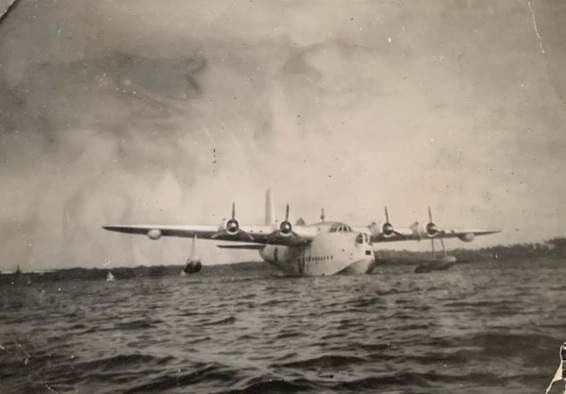 |
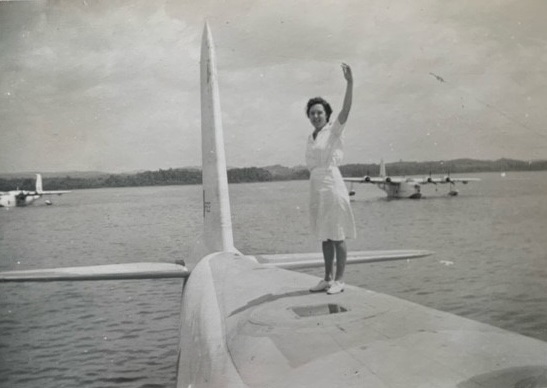 |
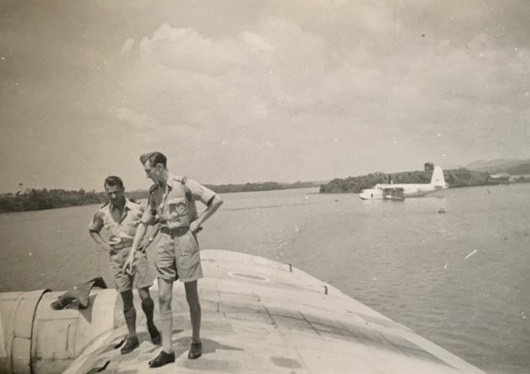 |
| Sunderlands of No 205 Squadron, probably at Koggala (Laurie Lowe is on the right, on the wing) |
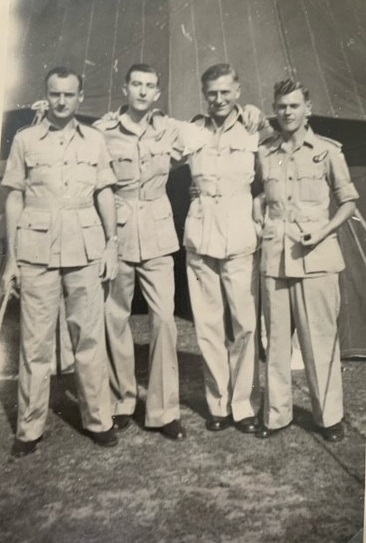 |
| Laurie Lowe (2nd from left) |
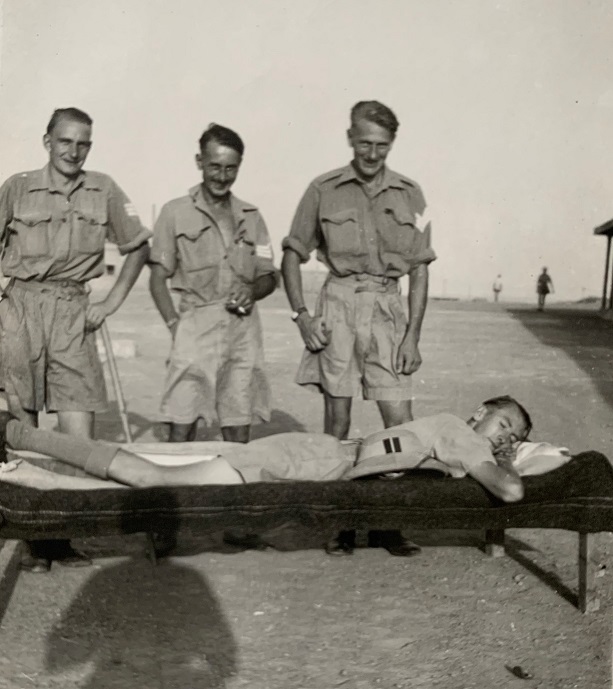
|
| Laurie Lowe (lying on the camp bed) |
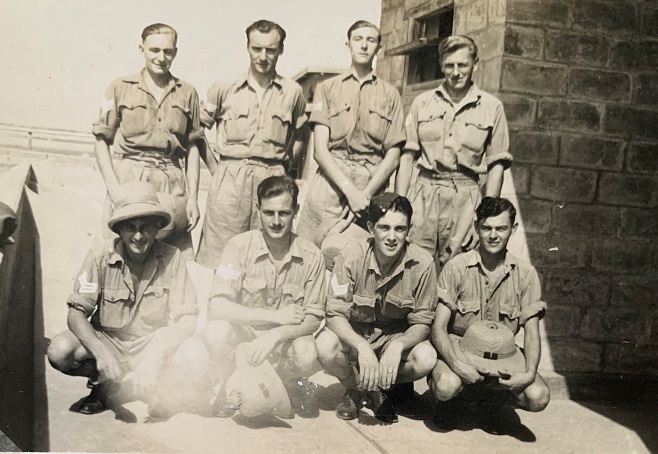 |
|
Laurie is back row, 3rd from left |
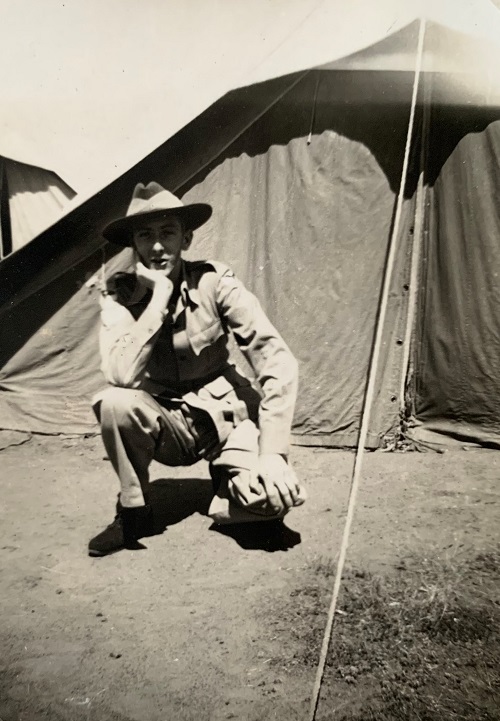 |
| Laurie Lowe |
| Photos courtesy - Pippa Anderson (from her uncle's, Laurence Mather Lowe's, collection) |
 |
 |
|
Shackleton MR Mk 2 of No 205 Sqn at RAF Changi, Singapore 1962/63 Photos courtesy - Roger Gregory© |
Shackleton MR Mk 2s of No 205 Sqn at RNAS Sangley Point, Philippines 1963/64 |
[Aircraft & Markings | Personnel, aircraft and locations | Commanding Officers]
*Honours in Black are those the squadron has a been granted the right to emblazon on the Squadron Standard, but does not do so.
Honours in Red are those actually emblazoned on the Squadron Standard
Honours in Blue are those the squadron has not been granted the right to emblazon on the Squadron Standard
Squadron badge image on this page is courtesy of Steve Clements
© Crown Copyright is reproduced with the permission of the Directorate of Intellectual Property Rights
This page was last updated on 17/03/25©
![]() Organisational Index
Organisational Index ![]()